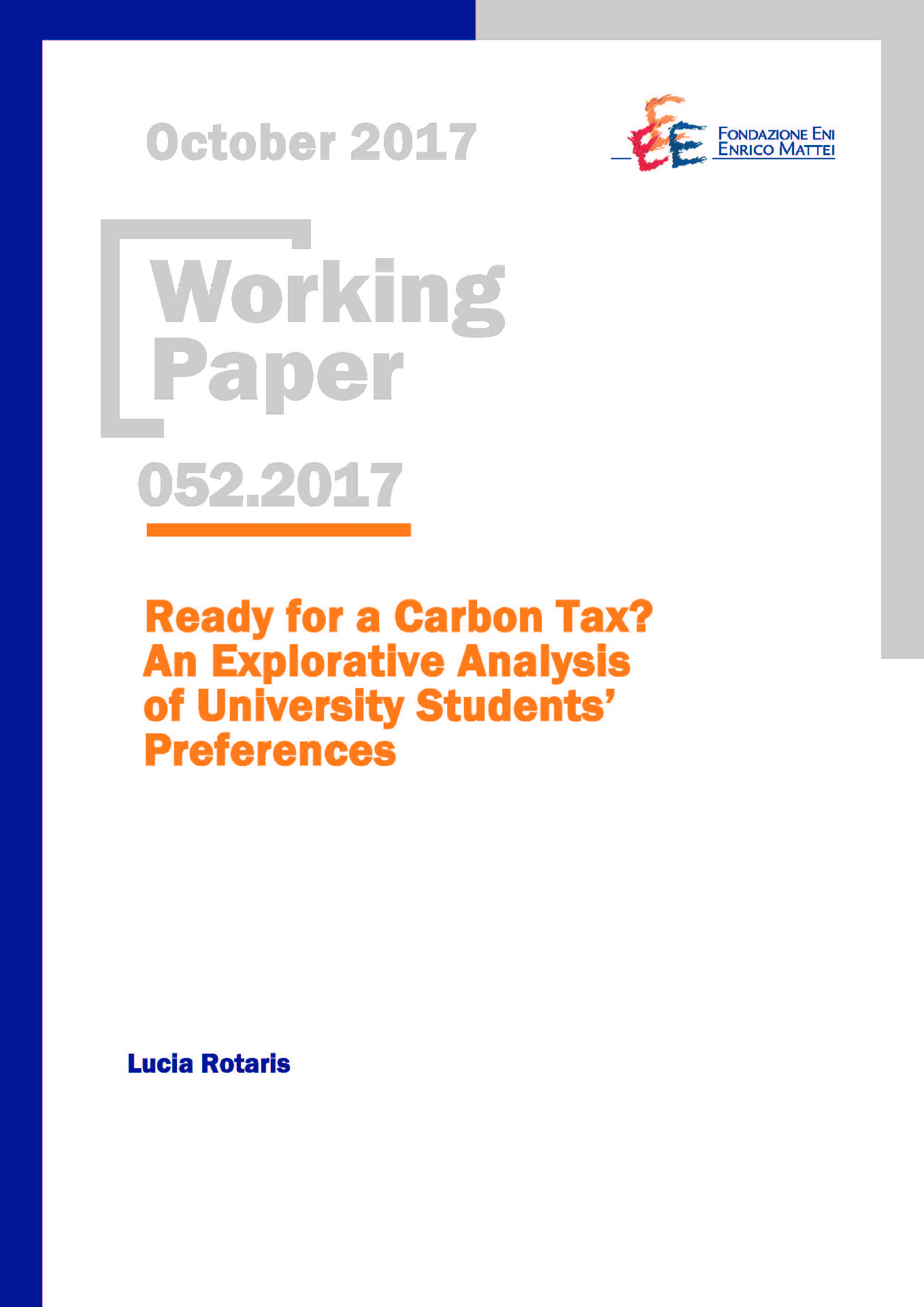Ready for a Carbon Tax? An Explorative Analysis of University Students’ Preferences

10.10.2017
Lucia Rotaris (DEAMS – University of Trieste)
H31, Q580
Carbon Tax, Willingness to Pay, University Students, Climate Change
Economic Theory and Applications
Carlo Carraro
Greenhouse gases emissions are inexorably rising worldwide and the frequency and disruptive power of extreme weather phenomena are dramatically increasing. Although command-and-control and regulation policies have been extensively used to mitigate climate change, more effective and potentially efficient policies are needed to curb the negative externalities produced by human activities. A carbon tax could make the case, but is seldom implemented due to its assumed political unpopularity. In order to estimate the acceptability and the willingness to pay (WTP) for a carbon tax, a contingent valuation experiment was administered in USA and in Italy to a sample of 150 university students. The research is innovative both for the topic chosen, since there are no studies testing the WTP for a carbon tax in the Italian context nor comparing it with the estimates obtained for other countries, and for the methodology used to estimate the WTP, making use of random parameters logit models to obtain individual specific estimates of the median WTP. The results show that the median WTP ranges between a minimum of $161 and a maximum of $242, and varies according to the purposes proposed for the tax revenue use, the respondents’ beliefs and knowledge about climate change, and some sociodemographic characteristics of the respondents (age, gender, and political affiliation). The students’ preferences seem to be quite similar when the nationality of the respondents is taken into account.
***
Suggested citation: Rotaris, L., (2017), ‘Ready for a Carbon Tax? An Explorative Analysis of University Students’ Preferences’,
Nota di Lavoro 52.2017, Milano, Italy: Fondazione Eni Enrico Mattei
